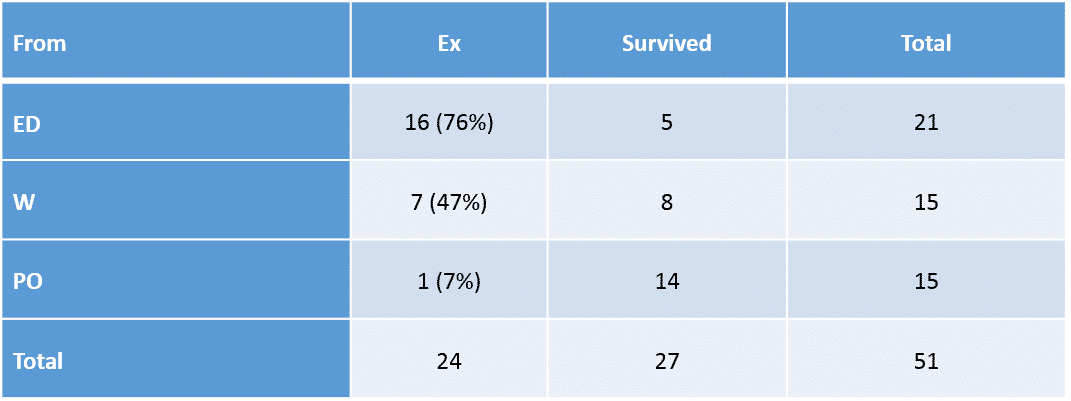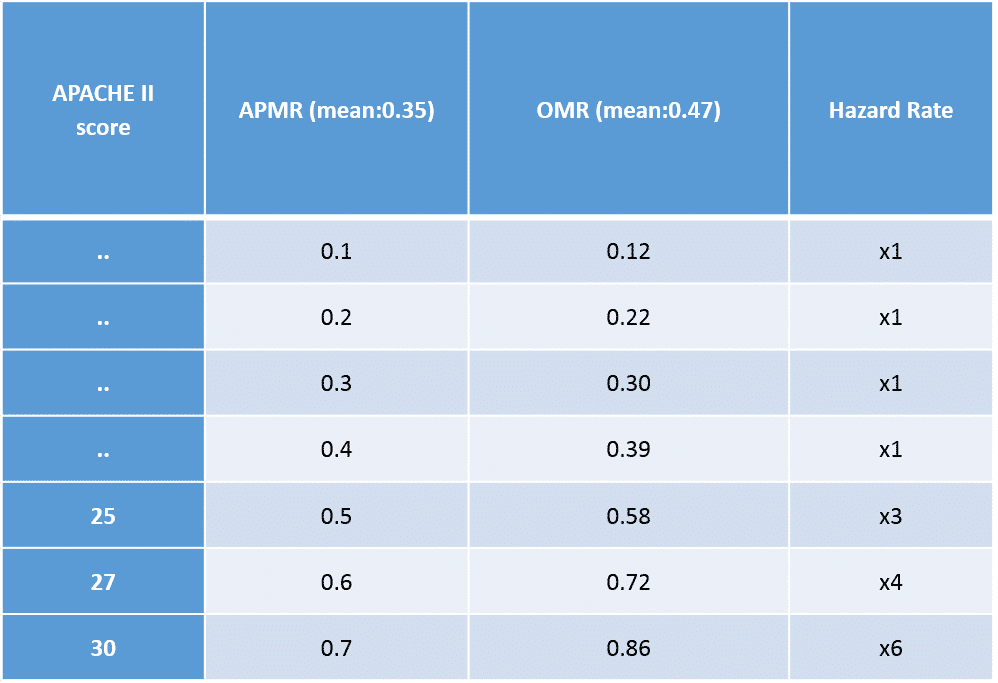
Cerebrovascular Incidents; Some Clues for Intensivists
Background: Cerebrovascular incidents (CV) be assumed as somehow a bit neglected in intensivist-club, better to get some more precise evidence.
Objective: Provide and document some practical evidence and approach for intensivists in CV patients.
Methods: Patients admitted to ICU with 90 day-follow-ups, were retrospectively analyzed. Data were assessed as admittance from; Emergency Department (ED), post-operative (PO) and in-hospital wards (W). Percutaneous tracheostomy (PT), APACHE II-predicted-mortality-rate (APMR) compared with observed mortality rate (OMR), and survival at 90 days.
Results: 51 CV out of 347 patients (15%), with 2x male predominance (m:37/f:14), mean age 64.5±16.0 were evaluated. The highest OMR was found for patients from ED (Table 1). The mean APMR was 39%, on the other hand OMR was found significantly higher as 47%. A sub-group regression analysis was performed to elucidate this difference that clarified an unexpected exponential increase in OMR at APACHE II scores of 25 and above (Table 2). PT was performed on 38 of 51 patients (75%) at the 19.7±9.9th ICU day. However, when PT performed on between 12-16th days, patients survived at the end of follow-up period LHR of 3x.
Conclusion: However, the study was retrospective and population was relatively small, results should be sought as to provide practical and useful clues to intensivists for better outcomes in CV patients; beware of those (1) 1/6th of every ICU admittance would be male-CV patient at 50-80s, (2) give more effort to patient-from-ED especially APACHE II 25 and above, (3) when PT assumed do it on 12-16th.


Powered by Eventact EMS